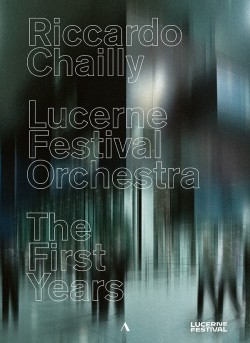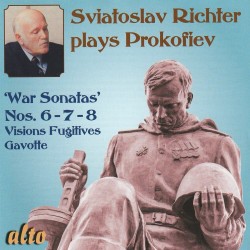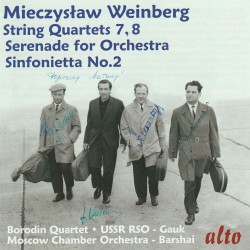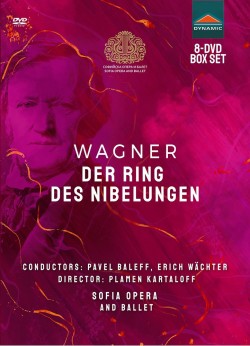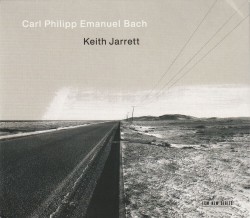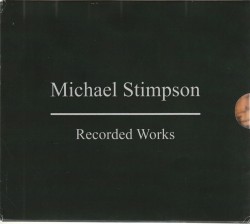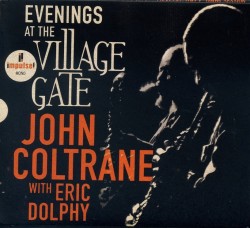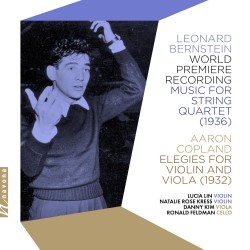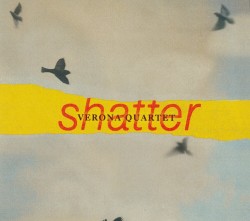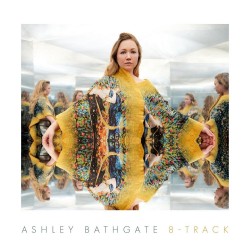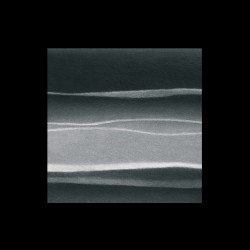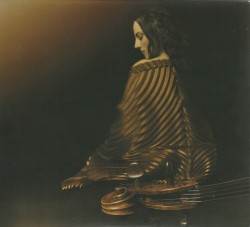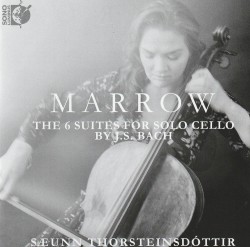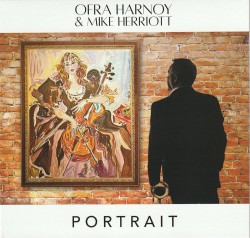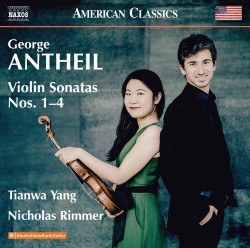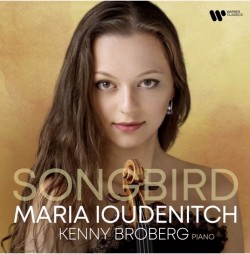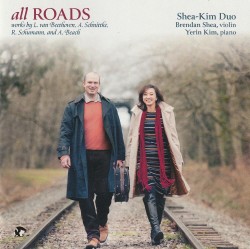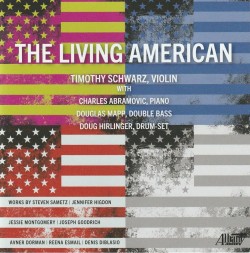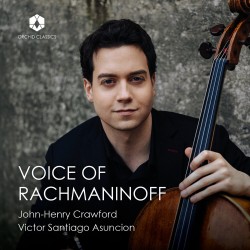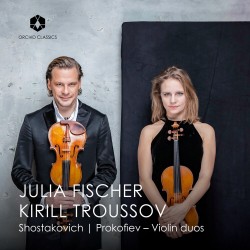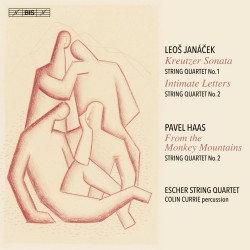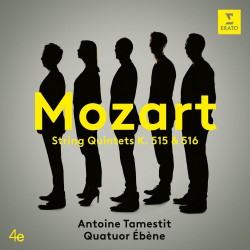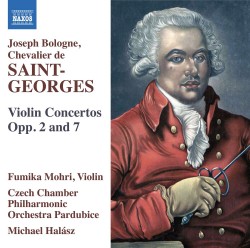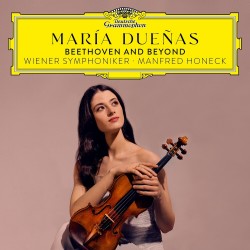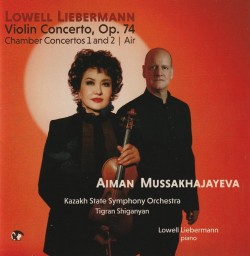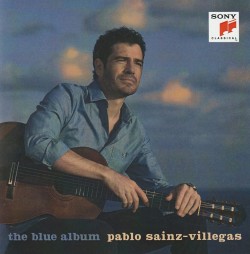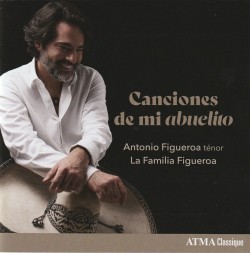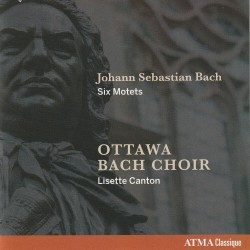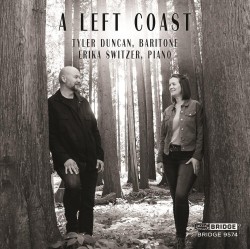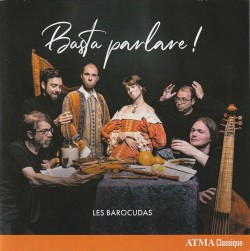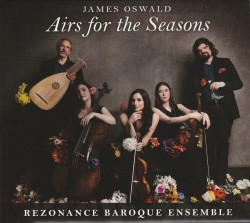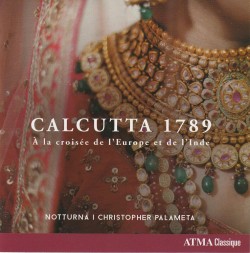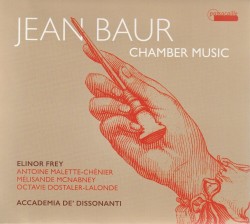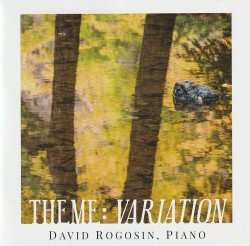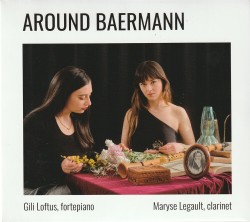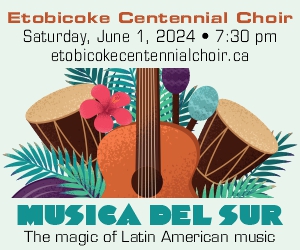Something in the Air | The Resurgence of the Too-often Scorned Viola - October 2023
Violas and viola players have been the butt of musicians’ jokes for centuries. A sample: What is the difference between a radio and a viola? A radio plays music. How do you know there’s a group of viola players at your door? None of them can find the key. Apparently this notoriety dates from the mid-18th century after violinist Francesco Geminiani was named conductor of a Naples orchestra. His timing was so erratic and so confused the players that he was demoted to the viola chair. Despite this reputation violas still remain a vital part of so-called classical music. For the past few years as well a growing number of improvising musicians have found that, tuned a fifth lower than the violin, the viola’s alto tone, thicker strings and heavier bow creates a more compatible sound for their creativity.
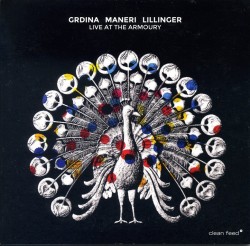 One player who has abandoned the violin and turned completely to viola is American Mat Maneri. On Live at the Armoury (Clean Feed CF 619 CD cleanfeed-records.com) he demonstrates his skill in a trio with German drummer Christian Lillinger and Vancouver’s Gordon Grdina playing guitar and oud. It’s timbres from the latter instrument which help define Maneri’s approach. Especially on the concluding Communion, the nagging sweeps and deliberate oscillations from the viola suggest the choked and arched patterns of an Indian violin, which align alongside Grdina’s staccato strumming which suggest isolated sitar echoes as much as those expected from a Middle Eastern instrument. The true indication of this fiddle’s versatility within this trio arrangement comes during Conjure, the almost 30-minute introductory improvisation. What the three conjure up is almost a history of cross-cultural currents. Grdina’s guitar motifs run from the sophisticated strums and plucks of Europeanized sounds to the extended twangs of simple folk music to the sophisticated slurred fingering and unexpected flanges and multi-string emphasis of exploratory jazz. Responsive and restrained, the usually overenthusiastic drumming of Lillinger is kept on a slow boil. Splashing cymbal colour and bass drum accents are proffered in place of a ceaseless beat to keep the track horizontal and harmonious. As for Maneri, besides asserting himself with bent notes, clenched stops and caustic glissandi, he sometimes pivots to formalism adding decorative frills to complement the guitarist’s playing, especially when Grdina slows down to magnify a melodic interlude. As well as relaxed motifs injected into the flowing narrative by both string players, they confirm comprehensive use of extended techniques and tandem connections during those interludes when they almost transform stop-start variations into tremolo drones that could come from a pipe organ.
One player who has abandoned the violin and turned completely to viola is American Mat Maneri. On Live at the Armoury (Clean Feed CF 619 CD cleanfeed-records.com) he demonstrates his skill in a trio with German drummer Christian Lillinger and Vancouver’s Gordon Grdina playing guitar and oud. It’s timbres from the latter instrument which help define Maneri’s approach. Especially on the concluding Communion, the nagging sweeps and deliberate oscillations from the viola suggest the choked and arched patterns of an Indian violin, which align alongside Grdina’s staccato strumming which suggest isolated sitar echoes as much as those expected from a Middle Eastern instrument. The true indication of this fiddle’s versatility within this trio arrangement comes during Conjure, the almost 30-minute introductory improvisation. What the three conjure up is almost a history of cross-cultural currents. Grdina’s guitar motifs run from the sophisticated strums and plucks of Europeanized sounds to the extended twangs of simple folk music to the sophisticated slurred fingering and unexpected flanges and multi-string emphasis of exploratory jazz. Responsive and restrained, the usually overenthusiastic drumming of Lillinger is kept on a slow boil. Splashing cymbal colour and bass drum accents are proffered in place of a ceaseless beat to keep the track horizontal and harmonious. As for Maneri, besides asserting himself with bent notes, clenched stops and caustic glissandi, he sometimes pivots to formalism adding decorative frills to complement the guitarist’s playing, especially when Grdina slows down to magnify a melodic interlude. As well as relaxed motifs injected into the flowing narrative by both string players, they confirm comprehensive use of extended techniques and tandem connections during those interludes when they almost transform stop-start variations into tremolo drones that could come from a pipe organ.
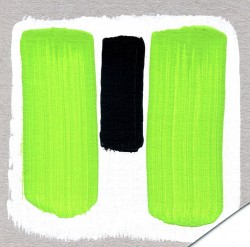 Stacking up viola textures as part of a trio committed to even more cutting-edge forms is what French-Japanese violist Frantz Loriot does on Köln (CD Editions 013 jasonkahn.net) with a single 32½-minute improvisation with Swiss percussionist Christian Wolfarth and the electronics of Zürich-based American Jason Kahn. Treating the viola as another sound source, Loriot’s sul ponticello strokes and concentrated glissandi add rugged tension alongside Kahn’s whooshing drones and Wolfarth’s muted clunks and patterning. As the improvisation evolves, the viola meets imprecise drum beats and electronic squalls with angled frog taps against the strings and single pizzicato strokes until all three musicians’ timbres progress in tandem. Kahn’s programming also takes in radio-sourced voices and music which is countered when the violist creates a metallic run that is almost vocal. Expanding past percussion rumbles and tremolo voltage buzzing from the others, Loriot eventually twangs and plucks a near-melodic line that, with variations, is combined with drum rattles and electronic hisses with a climax that becomes more distant, then vanishes.
Stacking up viola textures as part of a trio committed to even more cutting-edge forms is what French-Japanese violist Frantz Loriot does on Köln (CD Editions 013 jasonkahn.net) with a single 32½-minute improvisation with Swiss percussionist Christian Wolfarth and the electronics of Zürich-based American Jason Kahn. Treating the viola as another sound source, Loriot’s sul ponticello strokes and concentrated glissandi add rugged tension alongside Kahn’s whooshing drones and Wolfarth’s muted clunks and patterning. As the improvisation evolves, the viola meets imprecise drum beats and electronic squalls with angled frog taps against the strings and single pizzicato strokes until all three musicians’ timbres progress in tandem. Kahn’s programming also takes in radio-sourced voices and music which is countered when the violist creates a metallic run that is almost vocal. Expanding past percussion rumbles and tremolo voltage buzzing from the others, Loriot eventually twangs and plucks a near-melodic line that, with variations, is combined with drum rattles and electronic hisses with a climax that becomes more distant, then vanishes.
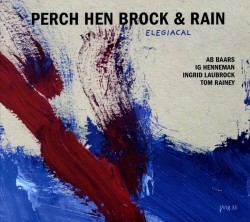 A different sort of viola interaction is featured on Elegiacal (Wig 33 stichtingwig.com). As Perch Hen Brock & Rain, Dutch violist Ig Henneman plays not only with her regular partner reedist Ab Baars from Amsterdam, but also with German saxophonist Ingrid Laubrock and American drummer Tom Rainey. Despite playing the only chordal instrument, Henneman mostly affiliates her sul ponticello pressure and spiccato strokes as part of the reed continuum. That often leaves Rainey’s pumps, ruffs and patterning as the main vehicle for narratives. Because of this, evolution is initially low energy with reed squeaks and slurps, string judders and drum beats undulated sporadically rather than harmonized. However the thin articulation begins to intersect by the mid-point Kites, as timbres left hanging in the air begin to coagulate due to the fiddler’s clenched string pressure plus dynamic forward motion created by the interconnection of Baars’ clarinet trills and Laubrock’s tenor saxophone slurs. By the time sounds on the concluding tracks are heard, the conundrum has been resolved. Still powerful, Rainey’s pops and ruffs are subtle enough to preserve a linear focus, while swelling string curves and pointed stops carve out a counter theme to the one projected by treble flutters from Baars’ clarinet or shakuhachi and energetic low breaths from the saxophonist. Henneman’s string sawing challenges Rainey’s tolling beats on the penultimate Walking Art, with renal sax honks and Baars’ aviary clarinet squeezes serving as the continuum. Stretching the narrative still further on the concluding title track, the other instruments concentrate their timbres as a backdrop to Rainey’s power paradiddles. Jagged reed bites and thin viola strokes finally express individual definition as they join forceful percussion strokes to lessen the tension and return to initial cooperation.
A different sort of viola interaction is featured on Elegiacal (Wig 33 stichtingwig.com). As Perch Hen Brock & Rain, Dutch violist Ig Henneman plays not only with her regular partner reedist Ab Baars from Amsterdam, but also with German saxophonist Ingrid Laubrock and American drummer Tom Rainey. Despite playing the only chordal instrument, Henneman mostly affiliates her sul ponticello pressure and spiccato strokes as part of the reed continuum. That often leaves Rainey’s pumps, ruffs and patterning as the main vehicle for narratives. Because of this, evolution is initially low energy with reed squeaks and slurps, string judders and drum beats undulated sporadically rather than harmonized. However the thin articulation begins to intersect by the mid-point Kites, as timbres left hanging in the air begin to coagulate due to the fiddler’s clenched string pressure plus dynamic forward motion created by the interconnection of Baars’ clarinet trills and Laubrock’s tenor saxophone slurs. By the time sounds on the concluding tracks are heard, the conundrum has been resolved. Still powerful, Rainey’s pops and ruffs are subtle enough to preserve a linear focus, while swelling string curves and pointed stops carve out a counter theme to the one projected by treble flutters from Baars’ clarinet or shakuhachi and energetic low breaths from the saxophonist. Henneman’s string sawing challenges Rainey’s tolling beats on the penultimate Walking Art, with renal sax honks and Baars’ aviary clarinet squeezes serving as the continuum. Stretching the narrative still further on the concluding title track, the other instruments concentrate their timbres as a backdrop to Rainey’s power paradiddles. Jagged reed bites and thin viola strokes finally express individual definition as they join forceful percussion strokes to lessen the tension and return to initial cooperation.
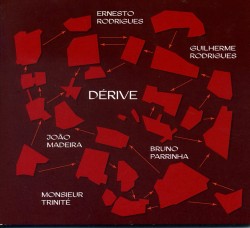 Attuned to a semi-traditional setting is the viola playing of Portuguese Ernesto Rodrigues with the Dérive quintet on its self-titled CD (Creative Sources CS 772 CD creativesourcesrec.com). Also featuring the cellist Guilherme Rodrigues, bassist João Madeira, flutist/bass clarinetist Bruno Parrinha and percussionist Monsieur Trinité, the nine-part Dérive suite evolves on the cusp of contemporary chamber music and free form improv. At various junctures, especially on Dérive VI and Dérive VII, there are melodic intervals which stack moving viola swipes against chalumeau bass clarinet buzzes and feathery flute trills swaddled in layered string rubs that undulate up and down the scale. But while the unfolding suite stays linear, its dynamic is defined by contrapuntal evolution, where shaking and swelling string parts vibrate collectively, sometimes interrupted by cymbal claps or maracas-like shakes from Trinité. Further consistency results from Madeira’s low pitched plucks. While this formula is constantly present as a continuum, other techniques are present elsewhere. For instance, the extended fourth sequence is introduced with a powerful arco twang that precedes the other strings’ entry and stretches the exposition so that all three soon create squeaking but harmonized timbres. For added variety throughout, the cello, bass and viola sometimes divide into separate duos to contrast high and low pitches. Elsewhere group string glissandi serve as a backdrop for the violist to initially shake out a theme statement, latterly use spiccato strokes and sawing squalls to torque all the players to produce theme variations, and finally use double strokes to outline a reconstituted sequel to the initial statement. In the end this statement is preserved among metal-banging percussion, energetic double bass rubs, multiple string stops and jittery flute whistles or deadened reed blowing to mark a sense of connection.
Attuned to a semi-traditional setting is the viola playing of Portuguese Ernesto Rodrigues with the Dérive quintet on its self-titled CD (Creative Sources CS 772 CD creativesourcesrec.com). Also featuring the cellist Guilherme Rodrigues, bassist João Madeira, flutist/bass clarinetist Bruno Parrinha and percussionist Monsieur Trinité, the nine-part Dérive suite evolves on the cusp of contemporary chamber music and free form improv. At various junctures, especially on Dérive VI and Dérive VII, there are melodic intervals which stack moving viola swipes against chalumeau bass clarinet buzzes and feathery flute trills swaddled in layered string rubs that undulate up and down the scale. But while the unfolding suite stays linear, its dynamic is defined by contrapuntal evolution, where shaking and swelling string parts vibrate collectively, sometimes interrupted by cymbal claps or maracas-like shakes from Trinité. Further consistency results from Madeira’s low pitched plucks. While this formula is constantly present as a continuum, other techniques are present elsewhere. For instance, the extended fourth sequence is introduced with a powerful arco twang that precedes the other strings’ entry and stretches the exposition so that all three soon create squeaking but harmonized timbres. For added variety throughout, the cello, bass and viola sometimes divide into separate duos to contrast high and low pitches. Elsewhere group string glissandi serve as a backdrop for the violist to initially shake out a theme statement, latterly use spiccato strokes and sawing squalls to torque all the players to produce theme variations, and finally use double strokes to outline a reconstituted sequel to the initial statement. In the end this statement is preserved among metal-banging percussion, energetic double bass rubs, multiple string stops and jittery flute whistles or deadened reed blowing to mark a sense of connection.
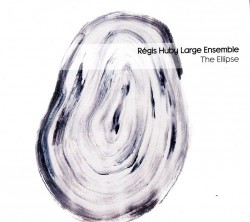 A more conventional – but no less invigorating – use of the viola and other strings takes place on French violinist Régis Huby Large Ensemble – The Ellipse (Abalone ABU 34 regishuby.bandcamp.com) with longtime collaborator violist Guillaume Roy. Both part of the 15-member Large Ensemble, Huby has cannily arranged his three-movement suite so that almost all of the four reeds, seven strings, two percussionists, pianist and trombonist are featured. A notable throwdown between the violist and violinist occurs as the introduction to The Ellipse Mvt III. But as slick, stretched and spiccato buzzes from the higher-pitched strings join with cellist Marion Martineau’s ostinato, dissonance turns to tonality to affiliate with the swing motifs which appear at intervals during this more-than-one-hour suite. Backed by bell-shaking, idiophone smashes and electronic vibrations from percussionist Michele Rabbia, first Olivier Benoit’s accelerating guitar riffs then Catherine Delaunay’s clarinet trills animate the exposition. Following a pause, all the musicians participate in a connective crescendo that lists southwards with no loss of power or colour. Similar section/solos interaction often come forward during the preceding sections. Although there are several tutti crescendos and unison string section sequences, these harmonic crescendos are muted for individual or small group expression. Among the standouts are trombonist Matthias Mahler’s contrapuntal smears, Baroque-like flute interjections from Joce Mienniel and sequences where guitar licks are cushioned by the strings or the viola and violin stretch a pressured line over accelerating horn vamps. Besides using marimba strokes to set up passages, Illya Amar’s vibraphone clanks constantly join percussive comping from Bruno Angelini’s keyboard to accent certain sequences while preserving linear flow.
A more conventional – but no less invigorating – use of the viola and other strings takes place on French violinist Régis Huby Large Ensemble – The Ellipse (Abalone ABU 34 regishuby.bandcamp.com) with longtime collaborator violist Guillaume Roy. Both part of the 15-member Large Ensemble, Huby has cannily arranged his three-movement suite so that almost all of the four reeds, seven strings, two percussionists, pianist and trombonist are featured. A notable throwdown between the violist and violinist occurs as the introduction to The Ellipse Mvt III. But as slick, stretched and spiccato buzzes from the higher-pitched strings join with cellist Marion Martineau’s ostinato, dissonance turns to tonality to affiliate with the swing motifs which appear at intervals during this more-than-one-hour suite. Backed by bell-shaking, idiophone smashes and electronic vibrations from percussionist Michele Rabbia, first Olivier Benoit’s accelerating guitar riffs then Catherine Delaunay’s clarinet trills animate the exposition. Following a pause, all the musicians participate in a connective crescendo that lists southwards with no loss of power or colour. Similar section/solos interaction often come forward during the preceding sections. Although there are several tutti crescendos and unison string section sequences, these harmonic crescendos are muted for individual or small group expression. Among the standouts are trombonist Matthias Mahler’s contrapuntal smears, Baroque-like flute interjections from Joce Mienniel and sequences where guitar licks are cushioned by the strings or the viola and violin stretch a pressured line over accelerating horn vamps. Besides using marimba strokes to set up passages, Illya Amar’s vibraphone clanks constantly join percussive comping from Bruno Angelini’s keyboard to accent certain sequences while preserving linear flow.
As demonstrated here, despite its less than stellar reputation, the viola remains a valued music-making partner, At least it’s true in the jazz and improvised music community – and that’s no joke.


